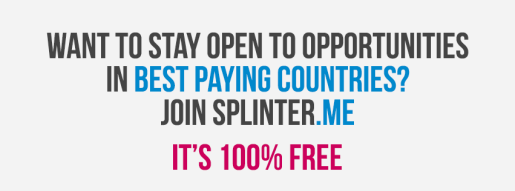Nowadays we are experiencing an explosion of user-generated data that is growing at alarming rates supported by technology developments such as internet, mobile devices, connected sensors etc.
A glimpse at how much content was generated every minute in 2012:

The challenge has become to gather and analyze this big amount of data, so that both the people generating it and businesses can benefit from its insights.
Some industries like retail, manufacturing and financial services already started to explore the benefits of using big data.
An interesting use case of big data is Parchment, a startup that helps high school students choose and apply to college. By analyzing a large database of student profiles such as grade point averages, SAT scores and acceptance data, Parchment assesses a student’s likelihood of admission to a specific school. It then determines what the student must do to improve acceptance chances. Parchment also plays matchmaker, pointing students toward schools that match their profiles, helping them find a good fit.
A very well known example of benefiting from big data is , that tries to deliver more relevant ads to its users and the companies trying to reach them by tracking their activities on the platform and beyond (any online activities, through cookies).
But what about recruitment?
Just like people would like to receive more relevant ads based on their online activities, they would also like to be informed about relevant work opportunities. And this should happen as well based on their online activities, since these can drive insights into their professional interests, expertise and experience.
The best use of big data for recruitment in the way we envisage it at splinter.me is: aggregating all relevant data from one’s online activities in one data-rich profile and then matchmaking the profile with work opportunities, returning results for both recruiters and job seekers.
This would be only the beginning. We would then also offer career advice for professionals based on big data, job description advice for recruiters based on big data. Or even more. Now we interpret web and mobile activities, but we are preparing for the Internet of Things. For example you might wear a bracelet that will tell us who you have met at which conference and we can use that on our platform to track and manage your connections.
What we are building lays at the border between big data recruitment and social recruiting and people search engines.
Social Recruiting taps into the opportunities brought by social networks, just like splinter.me does. But while Social Recruiting in its traditional sense allows companies to only distribute their job openings across multiple channels, at splinter.me we also offer them the possibility to have data from all social networks in one place, with all the data analyzed and ready to return fast results.
People Search Engines emerged lately covering exactly this need of recruiters: having all the relevant information across the web about people in one place. But these platforms are designed only for recruiters, while data about talents is gathered from public sources or through paid APIs and not made available for the talents themselves. At splinter.me we empower talents as much as we empower recruiters. Hence, professionals can see their data aggregation, can edit their profiles while still keeping the social validation and have lots of benefits from using the platform, like for example receiving career advice and being able to explore their contacts in new ways open up by technology.
Overall, the more data is generated by people and the better we can analyze it and make use of the insights, the more transparency in the hiring process will be for both recruiters and talents. We are here to transform the long process of recruitment into real-time and human work into partially or totally automatized work.

Image credit: Adelina Peltea
Sources















